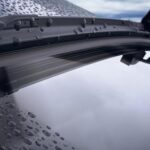
Whether responding to a traffic accident, searching for a missing person, stopping a crime in progress or pursuing a suspect, seconds and information makes the difference in law enforcement and that means that police departments are increasingly turning to drones in their mission to protect and serve. Let’s see why.
Drones are Flexible, Inexpensive and Efficient
Drones are attractive to law enforcement agencies because they offer the ability to operate in a variety of environments where it is either too expensive, too dangerous or just impossible for officers to go. At far less than the cost of manned aircraft like a helicopter, a drone, often also referred to as a UAS or Unmanned Aerial System equipped with a camera can give a police department an eye in the sky that’s easy to deploy and operate on reasonably priced rechargeable batteries. In fact, the drones in use in most police departments are the same as those used by civilian hobbyists and photographers, meaning the equipment is widely available at competitive prices.
Not only are drones useful in providing police departments with a birds-eye view of their communities, but many are also capable of operating indoors, giving officers the ability to get a look at what’s happening inside a building that may be structurally compromised or that houses toxic materials without requiring them to put their lives in danger.
Unlike helicopters used in aerial operations or specialized robots used in enclosed or inaccessible environments, drones are relatively inexpensive and can be deployed quickly, saving valuable time in emergency situations. To get a drone in the air simply requires popping a charged battery pack in the machine, turning it on and having a trained operator get to work at the controls. Check out this video to see examples of law enforcement drones in action.
Let’s look at some of the exciting work drones are doing to help law enforcement personnel in their important mission.
Search and Rescue Operations
Perhaps one of the best-known uses of UAS or drones in law enforcement is in search and rescue operations. Equipped with streaming video cameras, drones can cover larger areas than searchers on foot, especially in challenging environments. Using thermal imaging or night vision cameras, drones can see where human searchers can’t, enabling them to search effectively even in areas with heavy tree cover.
Some departments outsource their drone search operations. They tend to work with contractors like the Roswell Flight Test Crew whose fleet of drones and heat-sensing cameras, along with experienced operators can be deployed to search in many kinds of terrain. For departments that don’t have the budget or the personnel to establish their own search and rescue drone capability, contractors can be a practical answer, available for use only when needed.
Traffic Accidents and Monitoring
Drones are used in many facets of law enforcement response to traffic accidents. A neighborhood in Houston, TX uses drones to respond within seconds to 911 calls regarding traffic accidents. They can begin surveying the area and capturing images of the scene within minutes, so officers have better information when they reach the scene. In addition to monitoring traffic and accidents from the air, drones are also used to take photographs that help officers reconstruct the accident scene to aid in investigations.
Many departments also use drones to assist in monitoring traffic, a role that previously would have required much more expensive solutions like helicopters and their crews. This is another area in which the cost-effectiveness of drone technology puts opportunities in the hands of departments that would not be able to afford more expensive helicopter traffic monitoring.
Preventing and Stopping Crime
Residents in the Houston neighborhood referenced above also benefit from another innovative use of drone technology. Police can deploy drones to rapidly respond when a home alarm is triggered. The drone can be on the scene within seconds, with cameras trained on the scene, potentially capturing images of an intruder and tracking their escape.
Monitoring Large Events
While some revelers are having fun and enjoying the festivities on New Year’s Eve in Las Vegas, Nevada, drones are on the job helping the police department to keep watch over the crowd. In situations where large numbers of people are gathered, such sporting events, parades, fairs or large holiday gatherings, police are able to monitor the situation from the air at a much lower altitude than would be possible with a helicopter, keeping an eye on any suspicious activity or packages.
Using drones to monitor a large crowd poses challenges, including contending with other aircraft that may be flying over the area, maintaining communication between the operator and the drone in an area where radio frequencies are crowded and taking care not to endanger the civilians gathered below. Operators must keep close track of obstacles and of their power supply, ensuring that their machine doesn’t fall out of the sky and cause injury.
Privacy Concerns and Regulation
The FAA regulates commercial and law enforcement drone use with the aim of preventing drones from interfering with aircraft and preventing accidents and injuries to individuals on the ground due to unsafe flying. In addition, departments are subject to state and local regulations regarding operating on privately owned property. Laws, regulations and departmental policies in place to prevent violating civilian protections against unreasonable searches and seizures form the framework for individual departmental policies that seek to keep their drone operations from violating the law.
Drones offer law enforcement agencies a vast and growing suite of capabilities that are already helping to save lives, solve crimes and keep citizens and their property safe from loss or damage. The technology on which these machines are built will only continue to evolve, becoming more accurate, safer, more efficient and opening even greater opportunities for law enforcement. Perhaps in the future, it will be possible for police to engage violent suspects via drone, further protecting not only the civilians they serve but also the officers themselves. As drones become more sophisticated, police departments will benefit.
- Understanding Why Digital Transformation Is Important for Business Expansion - December 17, 2019
- Creative Ideas About Deck Trends for 2020 - December 16, 2019
- Tips on Driving Habits That Can Help to Increase the Life-Span of Your Car - October 29, 2019






